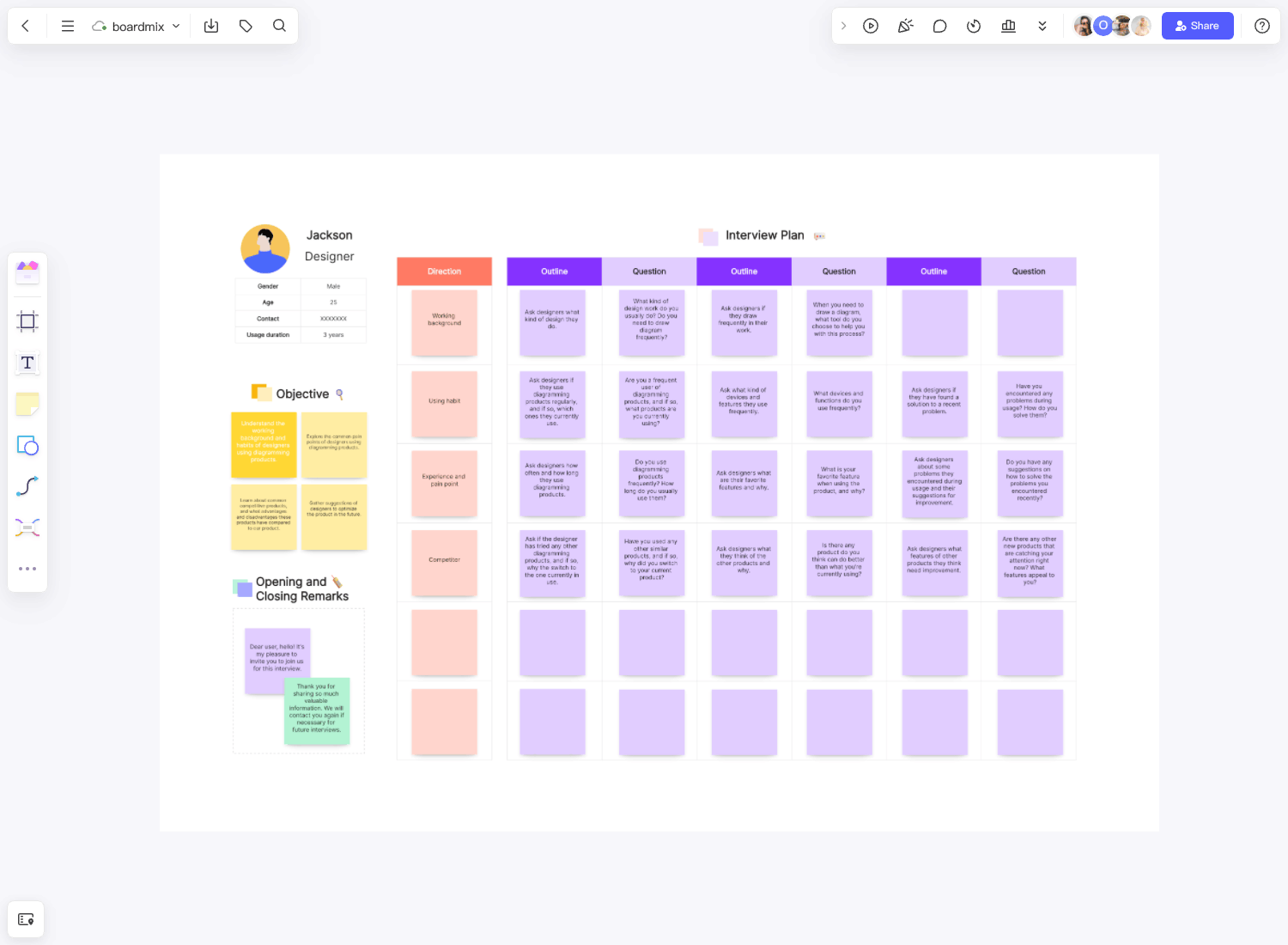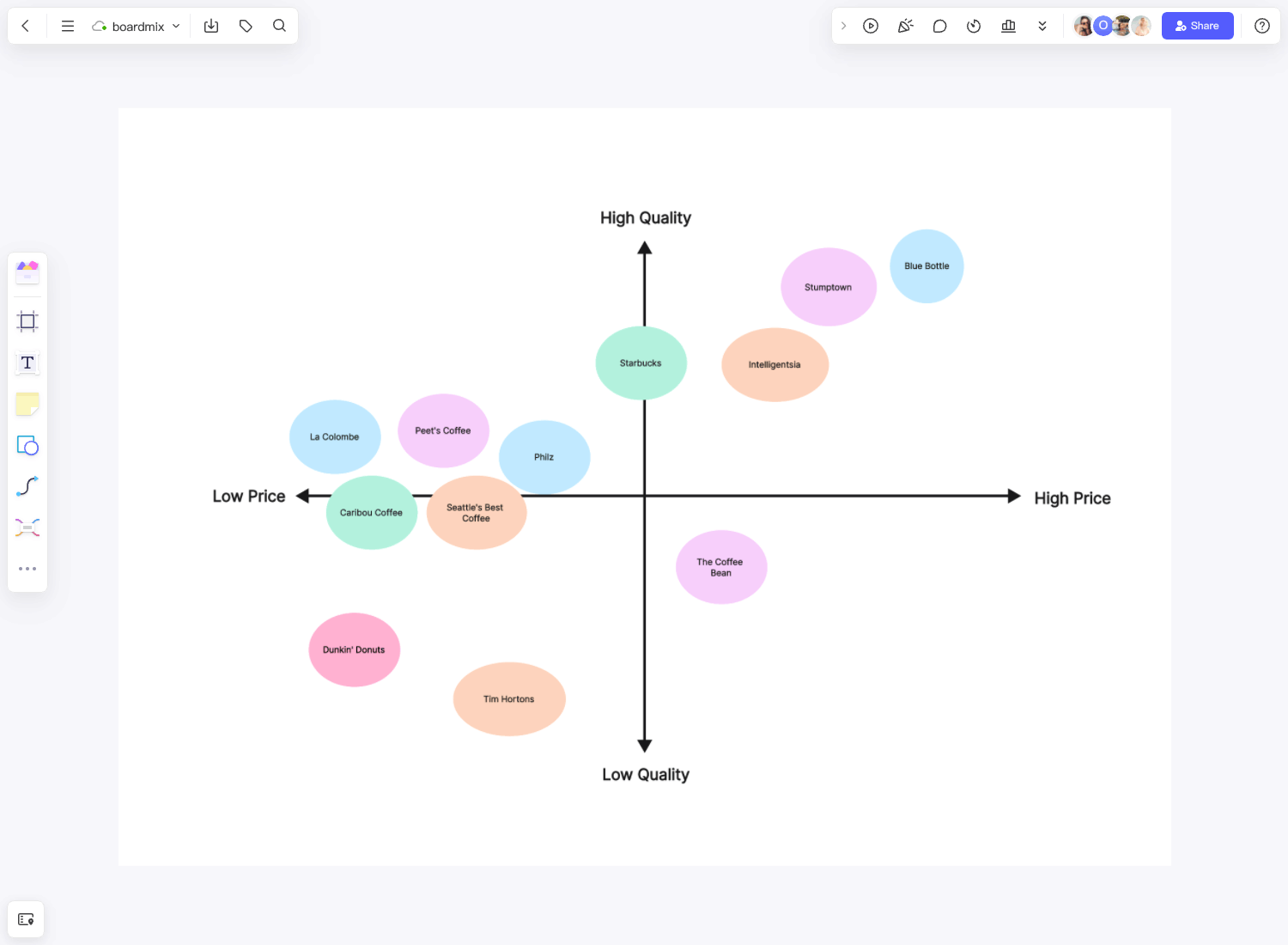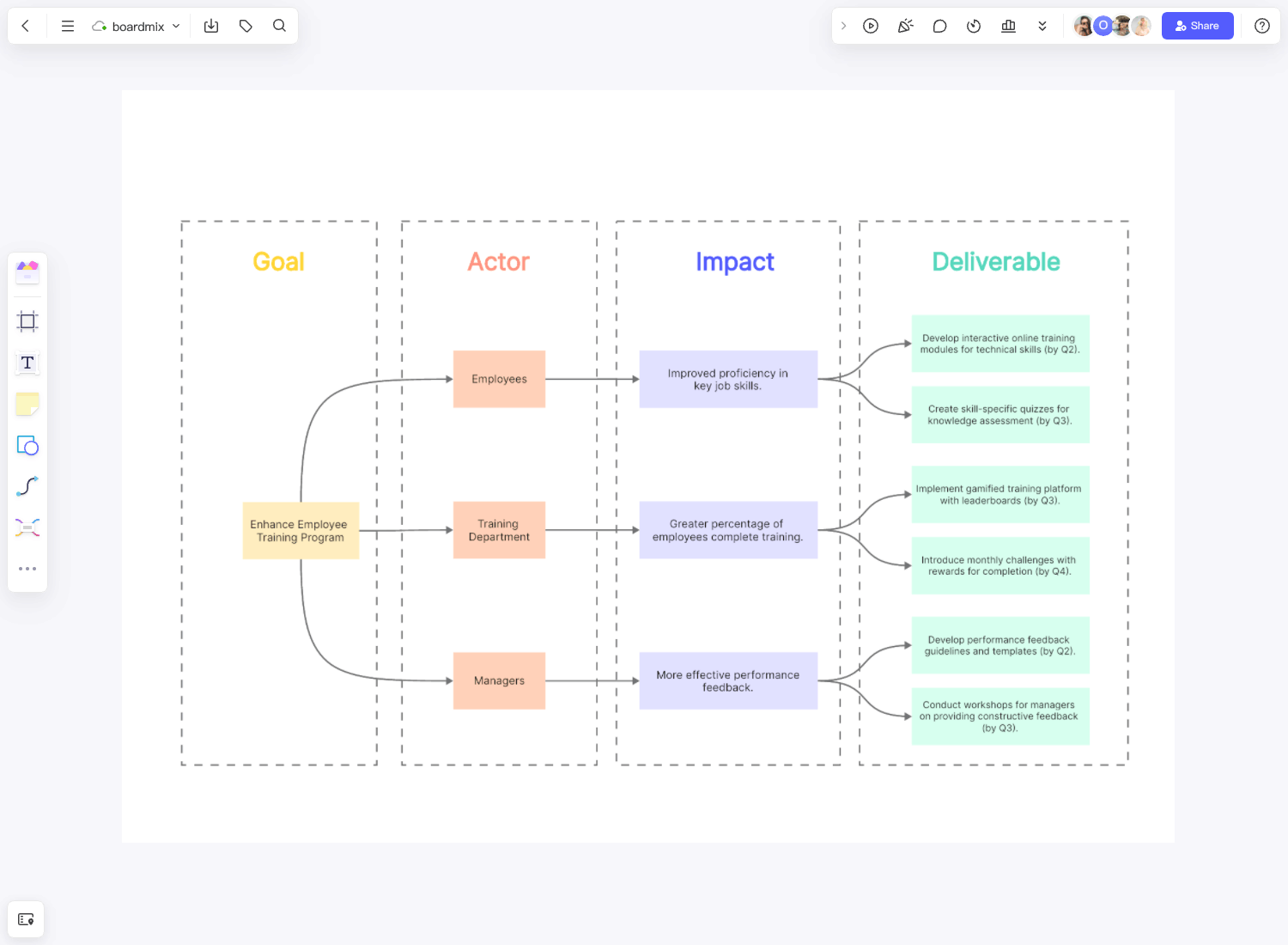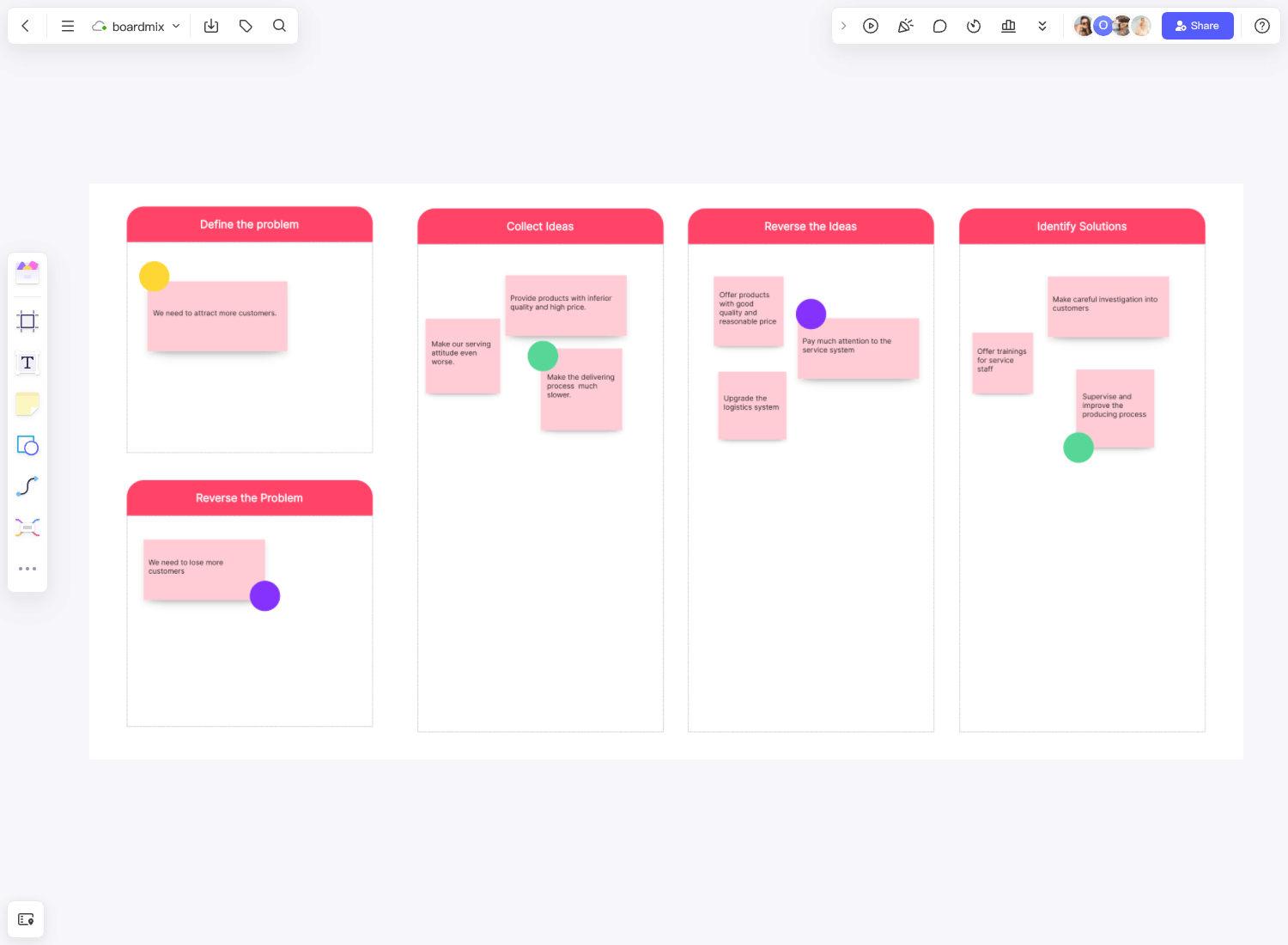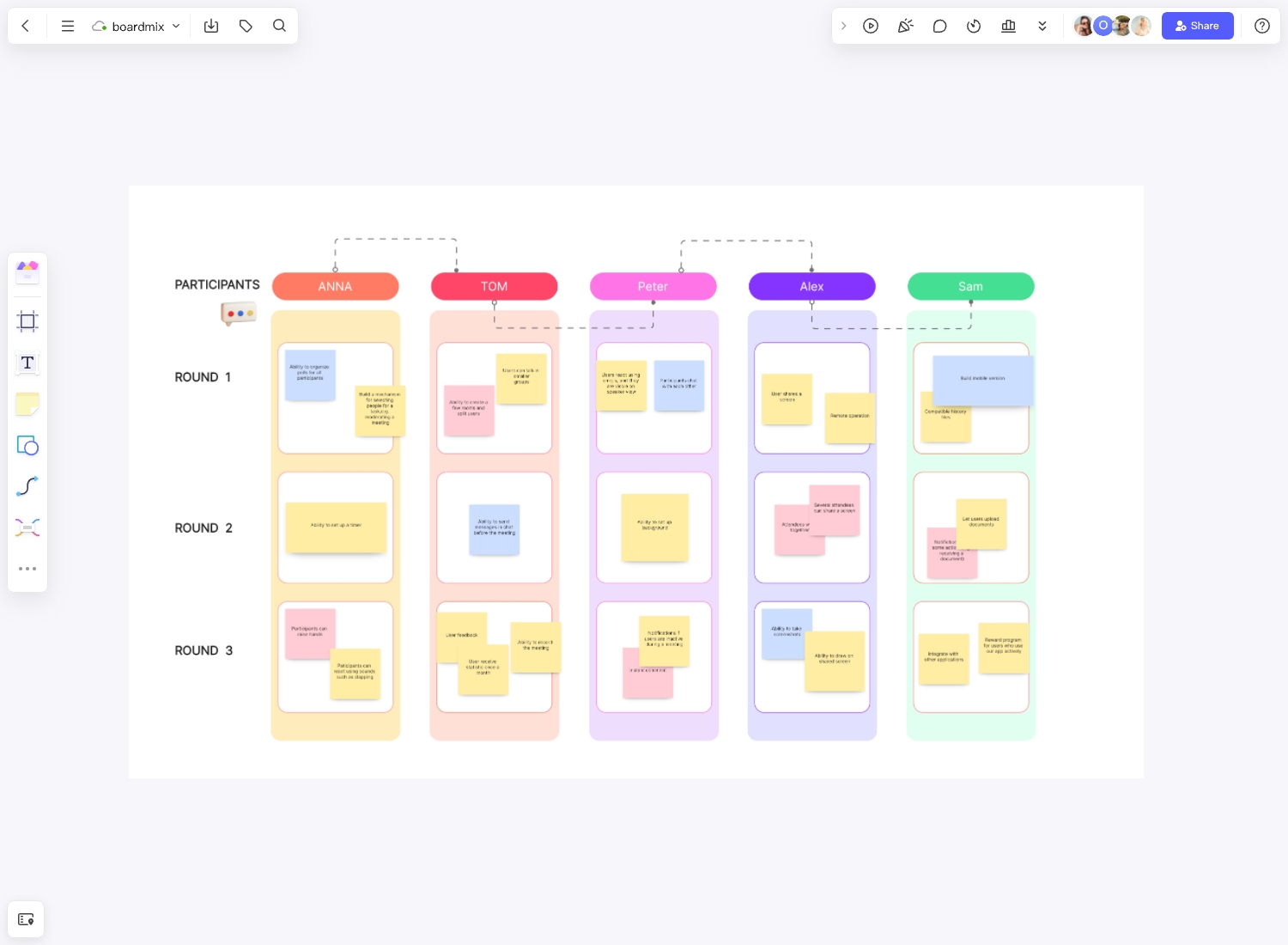The best way to understand one’s perspective is to talk to them. This applies to any industry, any field, and even in life. While you can have conversations with friends and family to know what they’re up to, it’s another story when knowing your customer’s perspectives. Continue reading to get more tips on how to conduct user interviews effectively.
What is a user interview?
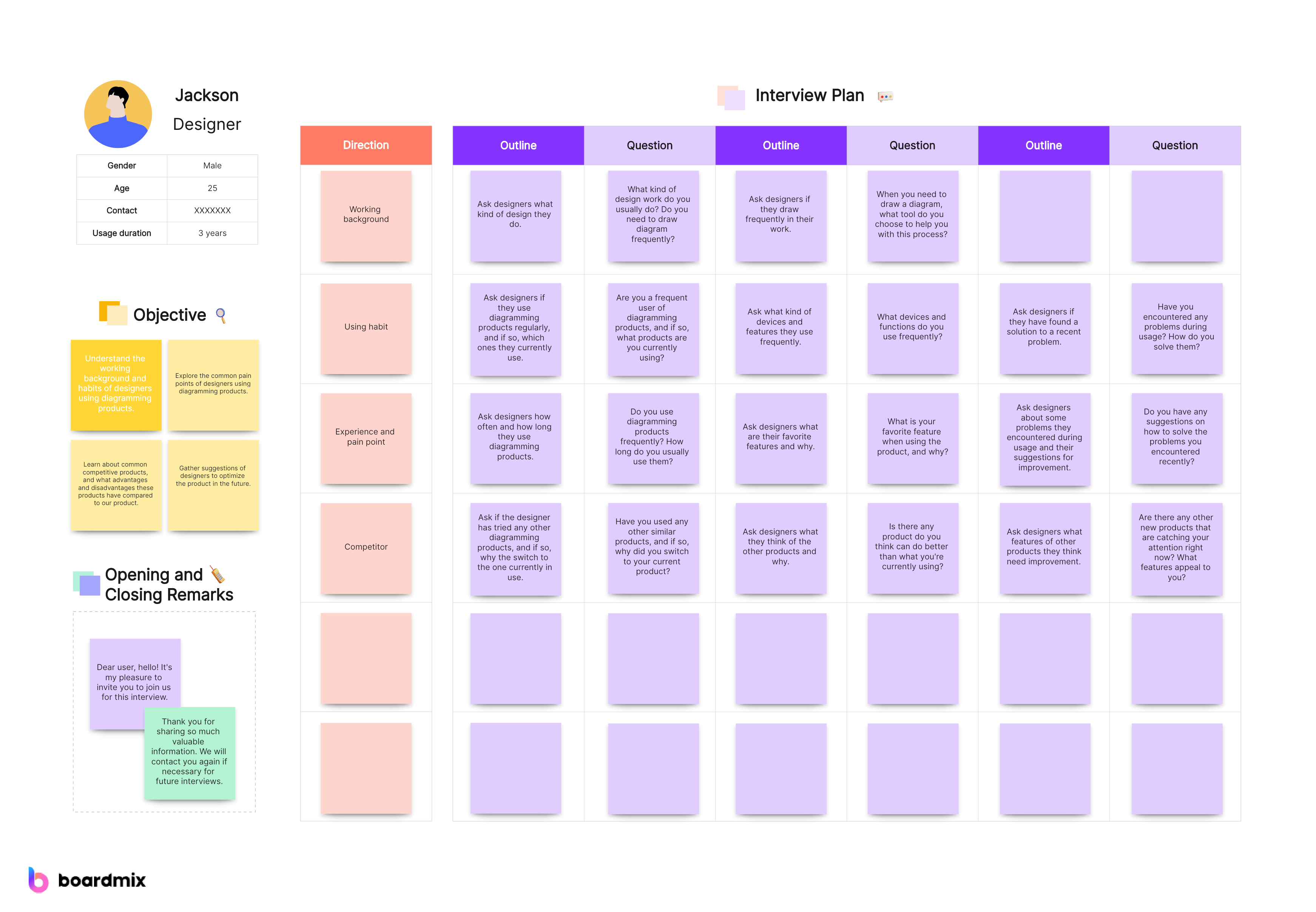
A user interview is a way to assess the user experience and the product’s usability or identify ethnographic and demographic data to create more comprehensive profiles of customers or end users. User experience researchers usually conduct these interviews. Besides using the user interview template, some research teams include video or audio recordings as support to gather essential facts about the customer.
Benefits of the user interviews
- User needs. The interview lets you talk about specific experiences, which is an excellent way to get in-depth information about your target customer. As you understand your customers better, the more effective the marketing, customer, and sales efforts will be.
- Market trends. User interviews are necessary to assess the customer’s demands and whether your target users would be interested in your service, product, promotion, or feature. Along the way, you can also identify the trends in specific markets, allowing your company to create better solutions for your target market.
- Identify the products’ strengths and weaknesses. Getting feedback from customers lets you know what they think of the service or product and how they think your company can improve it. You won’t only get good words from them, but they’ll also help you map solutions for areas needing improvement.
- Develops trust with target customers. Most customers will feel valued if someone from a company they patronize reaches out to know what they think of the products or services. Along the way, user interviews build rapport between the users and the company, which usually results in better customer-company relationships.
When to conduct a user interview?
You can always conduct a user interview whenever you assess the effectiveness of your products and services to the target market. But there are three essential situations where a user interview will always be necessary.
- At the start of the project. You can start interviewing target users before having a clear concept. The information you’ll gather from initial interviews will help you better understand potential users, including their preferences and the solutions they aim for.
- In the early phases of product development. Once you have a prototype, you can conduct a user interview to evaluate usability and gather valuable feedback before products get their final output for implementation and mass production.
- After the product has been distributed to the market. Complacency is not tolerated in business. This means you still need to conduct user interviews and product observation to give customers a chance to show how they interact with the product.
What should be included in a user interview?
You can’t conduct interviews without the guide questions. These are not merely questions. Ensure to formulate them so that they relate to the products involved and your target users. You can group your questions based on the following categories:
- Customer Introduction
- Topic-specific questions
- Product Opportunity
- Product feedback/reaction
Another aspect that must be included in the user interview is a moderator guide to assist the interviewer during the session. You can also use note-taking templates and feedback-analysis spreadsheets to record interview results quickly.
Application of User Interview in Different Industries
User interviews are a powerful tool used across various industries to gain in-depth insights into the needs, behaviors, experiences, and motivations of users. They provide an opportunity to engage directly with users, allowing businesses to understand their perspectives and make informed decisions.
Software Company User Interview
A software company developing a new app might conduct user interviews to understand potential users' needs and pain points. The interview could include questions about their current app usage, features they find most useful, and problems they encounter. This information can guide the development process to create a product that meets users' needs.
Education Industry User Interview
An educational institution planning to introduce a new online learning platform may interview students and teachers. The interview might explore their comfort level with technology, preferred learning/teaching methods, and challenges faced in online education. This feedback can inform the platform's design to ensure it is user-friendly and effective.
Retail Store User Interview
An online retailer looking to enhance its website's user experience might interview customers about their shopping experience. Questions could cover website navigation ease, product search and selection process, payment options, and delivery service quality. This insight can help the retailer refine its website design and functionality.
Steps to use Boardmix for User Interview
1. Start by creating a new whiteboard: You can choose from various templates or start with a blank canvas.
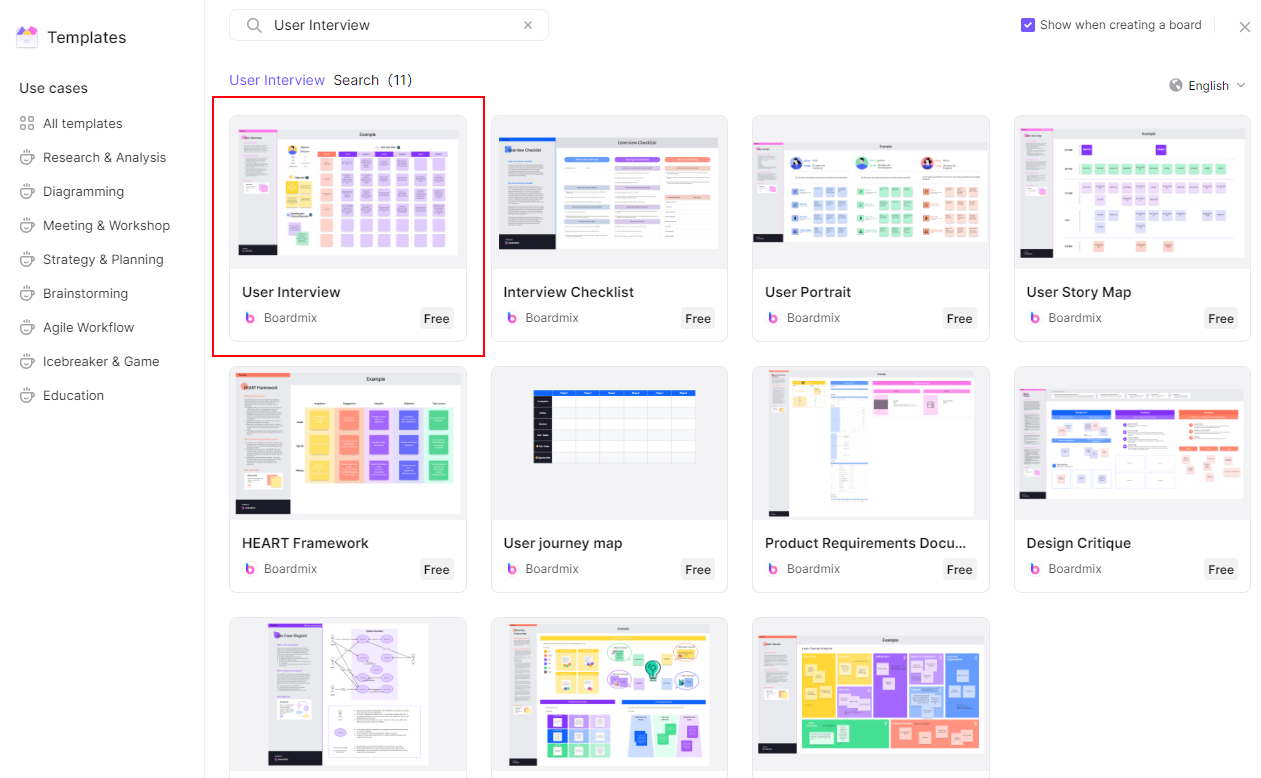
2. Invite your team and the interviewee: Boardmix supports real-time collaboration, allowing everyone to participate simultaneously.
3. Use drawing tools during the interview: Capture insights, feedback, and observations visually during the conversation. This could include mind maps, flowcharts, or simply notes.
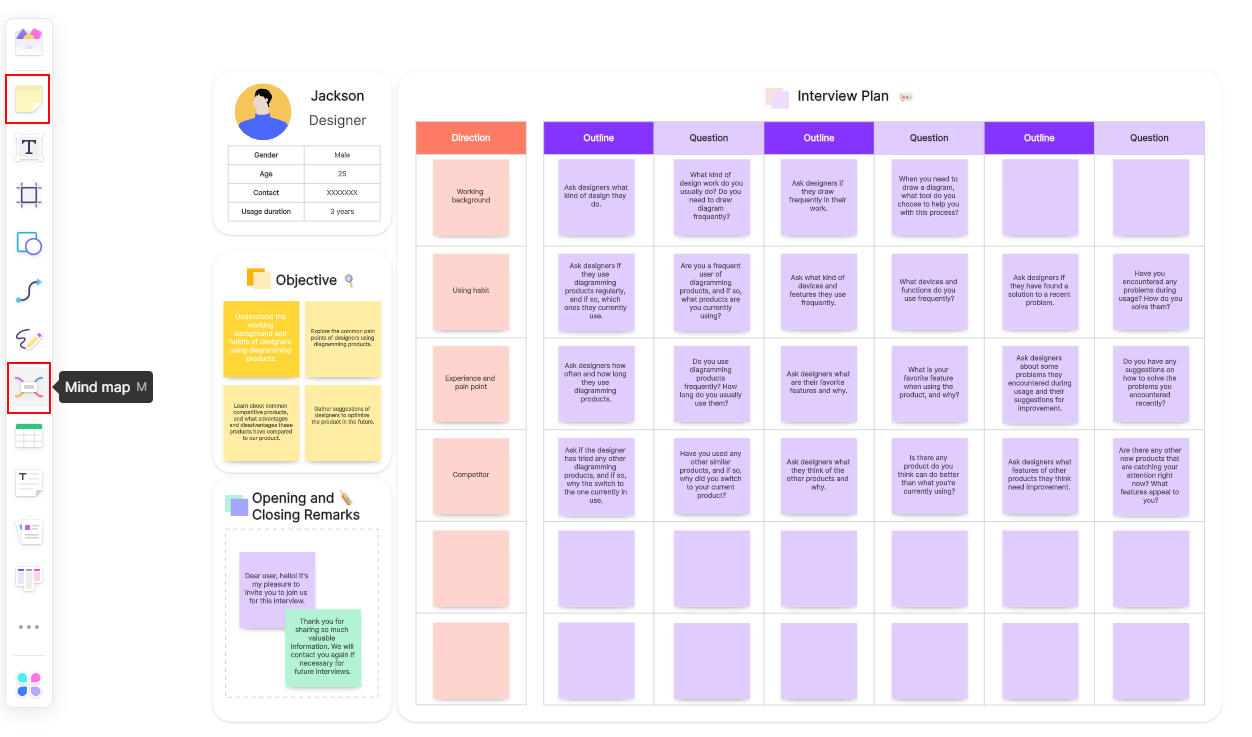
4. Organize your thoughts: Use sticky notes and sections to categorize information effectively.
5. Share the whiteboard: Once the interview is complete, you can instantly share the whiteboard with stakeholders.
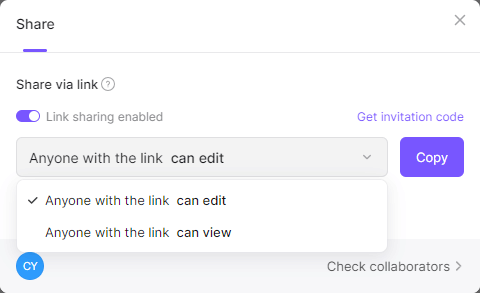
FAQs about the user interviews
How many participants do you need for a great user interview?
You can start with 5–7 interviewees. If you’re not getting new insights from that number of participants, decide with your team whether to add more or change the criteria in choosing your participants. Essentially, there are no specific rules set for the number of people for the interview; what matters is choosing the right ones.
Commonly asked questions in a user interview:
As you know, you must include various types of questions in your interview sheet. All of which must be related to the product in question. These are some standard questions you can use when conducting a user interview:
- Tell me about your background.
- What are some of the websites or apps you use the most daily?
- What is your role at your company?
- What do you think about this product?
- How would this product help you?
How to make a well-structured user interview?
Below are simple steps to formulate an excellent user interview:
● Explain the goals and purpose of your interview. Don’t surprise your participants with your questions. You must discuss with them first the interview, why you’re doing it, and the possible questions.
● Get started. Be confident and ensure participants are comfortable enough to start the interview. It pays to make eye contact with them.
● Give open-ended and motivating questions for users to flourish. The key to getting essential answers is to ask the right questions. Make your participants feel their answers are valid and vital to improving your service or products.
● Express gratitude. Remember to thank participants for their time and valuable answers and feedback.


